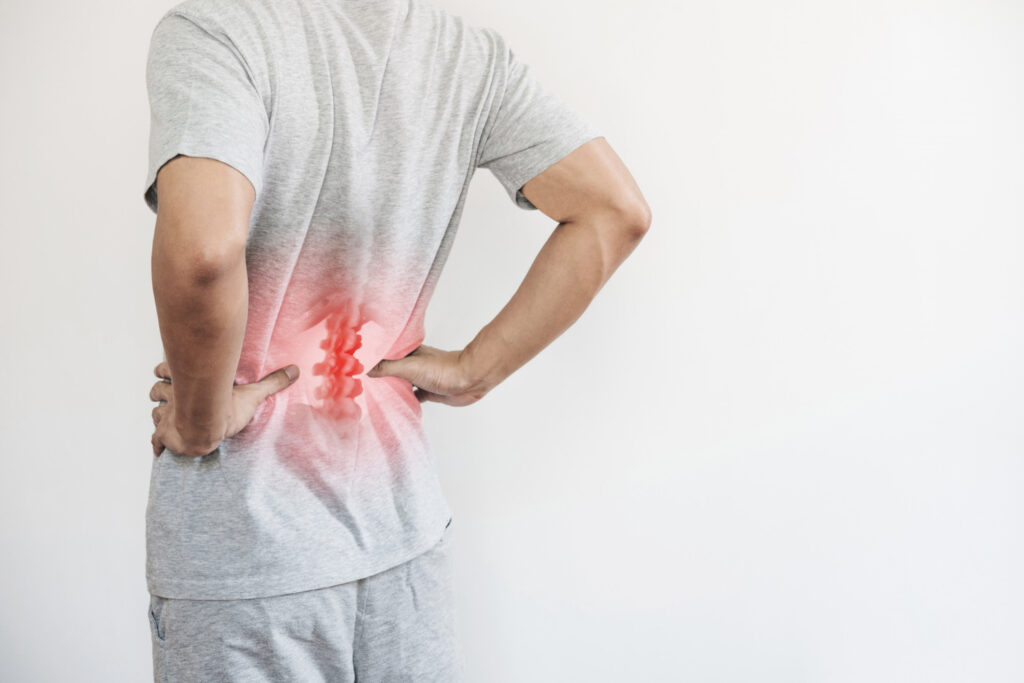Lower back pain can be a persistent and debilitating condition that significantly impacts one’s quality of life. Fortunately, there is hope for individuals seeking relief – spinal decompression therapy.
Spinal decompression therapy encompasses a range of treatments, and its effectiveness varies depending on individual circumstances. From alternative therapies like acupuncture and chiropractic care to more invasive procedures such as surgery, we will provide a comprehensive overview of the available options.
This comprehensive guide will delve into the world of spinal decompression therapy, covering a spectrum of treatments, from alternative therapies to surgical interventions, all aimed at providing much-needed relief for lower back pain.
What is Spinal Decompression?
Spinal decompression is a set of treatments designed to alleviate back pain by relieving pressure on the neural elements of your spine. Spinal decompression therapy offers a life free from lower back pain by targeting the root causes of discomfort and providing much-needed relief.
At the core of spinal decompression therapy is the understanding that lower back pain often stems from pressure on the neural elements within the spine. To grasp the significance of this therapy, it’s essential to comprehend the intricate structure of the spine itself.
The spine, comprised of vertebrae, ligaments, and spinal disks, boasts remarkable flexibility. The spinal column is nestled within this architectural wonder, a vital nerve pathway responsible for transmitting crucial signals throughout the body.
However, the wear and tear of daily life or injuries can disrupt this delicate balance, resulting in debilitating pain caused by the compression of the spinal cord or nerves.
Conditions Treated by Spinal Decompression
Let’s embark on a journey to explore the common back issues that can find solace in spinal decompression therapy:
Bulging Disks: These troublesome occurrences transpire when the cushion between vertebrae protrudes, exerting pressure on the surrounding structures.
Degenerative Disks: A condition marked by the gradual wearing down of the cushion between vertebrae, leading to pain and discomfort.
Herniated Disks: The result of a part of a disk pushing against a nerve, causing a cascade of pain and discomfort.
Pinched Nerves: When a nerve finds itself under compression, this condition can manifest as numbness, pain, or tingling sensations.
Sciatica: This condition involves damage to the sciatic nerve, often causing pain that radiates down the leg and lower back.
Spinal Stenosis: Characterized by the narrowing of spaces within the spine, often due to bone spurs or bulging and herniated disks.
By gaining insight into these common conditions, you’ll be better equipped to navigate spinal decompression therapy and explore how it can help those seeking lower back pain relief.
Types of Spinal Decompression Therapies
The choice of spinal decompression therapy is not a one-size-fits-all scenario; it’s intricately tailored to the nature and severity of your condition.
We’ll illuminate the path toward lower back pain relief by dissecting the diverse treatments available, ranging from non-invasive approaches to surgical interventions.
Home Care
Often, acute back pain resolves naturally. Simple measures like pain relievers, muscle relaxants, and the application of hot and cold packs can offer solace during the healing process.
Non-Invasive Therapies
For chronic or persistent back pain, the initial line of defense often involves non-invasive treatments, including:
- Acupuncture: Strategically inserting small needles at specific points on your body to alleviate pain.
- Chiropractic Care: Focusing on spinal adjustments to realign bones and alleviate discomfort.
- Physical Therapy: Collaborating with a therapist to learn stretches, proper lifting techniques, and exercises to reduce pain.
- Traction: Employing pulleys, weights, and a traction table to stretch your spine. Inversion therapy, a subtype, utilizes gravity to alleviate spinal pressure by tilting a table.
- Nerve Stimulation: Transcutaneous Electrical Nerve Stimulation (TENS) employs small electrical charges to relax muscles and alleviate nerve-related pain.
Spinal Decompression Surgeries
When conservative approaches yield limited results, surgical intervention may be deemed necessary. The choice of surgery is contingent on the specific condition and its severity, including:
- Corpectomy: Involves the removal of a vertebra or disk, often followed by spinal fusion to stabilize the spine.
- Diskectomy: The removal of part of a disk to relieve nerve pressure.
- Foraminotomy or Foraminectomy: Procedures to widen the openings for nerve roots, allowing them to exit the spinal cord without compression.
- Laminotomy or Laminectomy: The removal of part or all of the bony arches in the spinal canal to relieve pressure.
- Osteophyte Removal: Addressing bone spurs by removing them to alleviate pressure.
Following surgery, a recovery period is essential, potentially involving hospital stays of up to five days. A full recuperation may span several months, contingent on the surgical approach.
Choosing the Right Procedure
Choosing the right procedure to embark on your journey toward lower back pain relief hinges on multiple factors, including your overall health history and injury severity.
To gain deeper insights into the extent of your injury, healthcare providers may utilize various tests, including bone scans, diskography, electrical tests like electromyography and nerve conduction studies, and diagnostic imaging techniques such as CT scans, Magnetic Resonance Imaging (MRI), and X-rays.
These assessments help pinpoint the root cause of your pain, guiding the path toward effective relief.
Risks / Benefits of Spinal Decompression
As we delve deeper into spinal decompression therapy, it’s essential to shine a light on its potential risks and the invaluable benefits it brings to those seeking relief from lower back pain.
Risks
While spinal decompression therapies hold the promise of alleviating pain, they are not entirely devoid of risks. It’s crucial to understand that some medications used in treatment can trigger allergic reactions or side effects. It’s essential to communicate any allergies or sensitivities to your healthcare provider.
Likewise, while non-invasive therapies like acupuncture, chiropractic care, and physical therapy are generally safe, they may not always provide the desired relief. The effectiveness of these treatments can vary from person to person.
When non-surgical spinal decompression therapy approaches prove ineffective, surgical interventions may be considered. However, surgeries inherently carry potential risks, including infection, bleeding, blood clots, and the possibility of nerve or tissue damage.
Benefits
On the flip side, effective spinal decompression treatments can offer a ray of hope by addressing the root causes of back pain. Healthcare providers typically adopt a strategic approach to ensure you receive the most suitable treatment with minimal associated risk.
Ultimately, the primary objective of these treatments is to restore your quality of life. Whether it’s enabling you to work, attend school, or enjoy recreational activities without the burden of pain, spinal decompression therapy strives for a future free from the constraints of lower back discomfort.
Success Rates of Spinal Decompression
When it comes to addressing lower back pain, surgical cases often showcase impressive success rates in terms of pain alleviation. It’s important to recognize that surgery can be highly effective for many individuals.
However, it’s equally essential to understand that it may not offer a comprehensive solution for all types of degenerative back issues. In some cases, there is a possibility of recurring symptoms.
Conclusion
Living with back pain need not be a lifelong sentence. Numerous treatment options are available, ranging from medications and home remedies to acupuncture and chiropractic care.
If conservative measures prove insufficient, surgical options can provide a path to an active and pain-free life. Spinal decompression therapy stands out as a promising approach, offering relief for lower back pain through a range of non-invasive and surgical techniques.
With the right guidance from healthcare professionals, you can embark on a journey toward improved well-being and enhanced quality of life.



